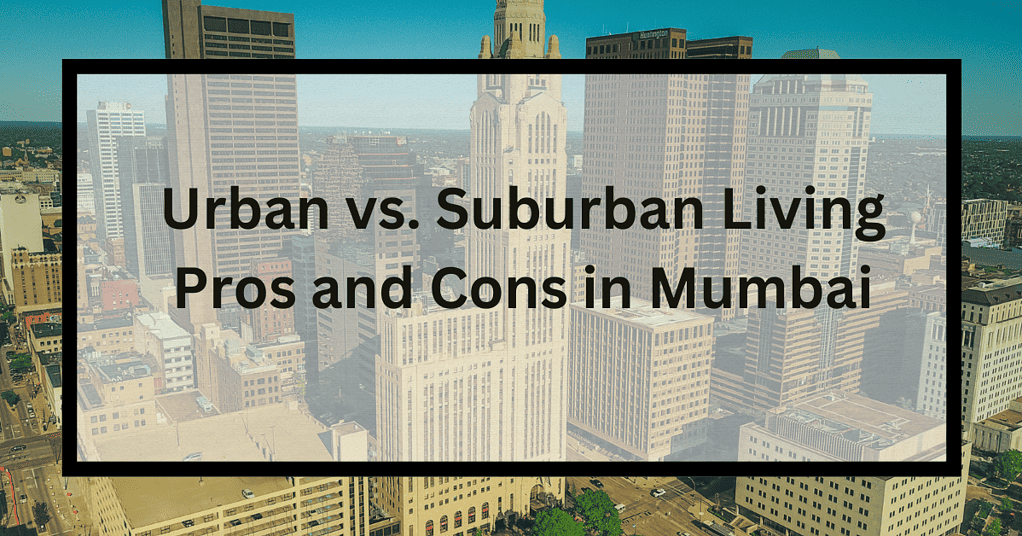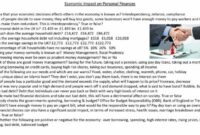Suburban vs. city life, a perennial debate! This exploration delves into the contrasting realities of these two living environments, examining everything from daily routines to cultural experiences.
From the quiet streets and spacious homes of the suburbs to the bustling energy and diverse opportunities of the city, choosing between them hinges on individual priorities. This comparison will weigh the pros and cons of each lifestyle, offering a well-rounded perspective.
Lifestyle Differences
Suburban and city life offer vastly different experiences, shaping daily routines, social interactions, and access to resources. These differences stem from the inherent characteristics of each environment, influencing how residents spend their time and engage with their communities. Understanding these nuances is crucial for anyone considering a move to either a suburban or city setting.
Suburban life often prioritizes family-centric activities and a sense of community fostered by shared interests and proximity. City life, conversely, emphasizes diversity, constant stimulation, and a fast-paced lifestyle, creating a vibrant, yet often more anonymous, social fabric. Both environments present unique opportunities and challenges, with their own appeal and drawbacks.
Daily Routines
Suburban daily routines often revolve around family schedules, errands, and community events. Commuting may involve driving short distances to work, school, or local shops. City life, on the other hand, frequently necessitates navigating public transportation, walking, or cycling. Workplaces and entertainment venues are often clustered in central areas, leading to shorter commutes for some residents, but potentially longer commutes for others, depending on their location. Flexibility is often a valued aspect of city life, as individuals adapt to the city’s rhythm.
Social Interactions and Community Structures
Suburban communities often feature close-knit neighborhoods with strong social ties. Residents frequently interact through neighborhood gatherings, school events, and local organizations. City life, however, fosters a diverse and dynamic social landscape. People from varied backgrounds and cultures interact in public spaces, creating a unique tapestry of social interactions. Both suburban and city environments offer different avenues for socializing, with some individuals preferring the intimate nature of suburban communities and others the diverse and dynamic interactions of a city.
Activities and Pastimes
| Activity | Suburban | City | Comparison |
|---|---|---|---|
| Commuting | Driving to work/school, short distances. | Walking, cycling, public transport, longer/shorter depending on location. | Suburban commuting is often by car, while city commuting involves diverse modes of transportation. |
| Socializing | Neighborhood gatherings, school events, local clubs. | Public parks, bars, restaurants, cultural events, shared experiences. | Suburban socializing is more localized, while city socializing is more varied and potentially broader. |
| Shopping | Local grocery stores, retail centers, less frequent trips to large stores. | Variety of stores, markets, diverse offerings in a central location. | City shopping offers greater diversity, while suburban shopping is often more localized. |
Amenities and Services
Access to amenities and services varies significantly between suburban and city environments. Suburban areas often have a mix of local businesses, parks, and schools. Cities typically boast a wider array of options, from high-end dining to world-class museums and entertainment venues. However, access to specialized services or healthcare facilities may vary.
Cost of Living
The cost of living significantly varies between suburban and city areas. Factors like housing, transportation, utilities, groceries, and entertainment all play a role in determining the overall financial burden. Understanding these differences is crucial for anyone considering a move or simply evaluating their current living situation.
A key aspect of comparing cost of living is recognizing that while cities often offer a higher concentration of amenities and cultural opportunities, these advantages are frequently offset by increased expenses across various categories. Suburban areas, in contrast, may provide more space and potentially lower housing costs, but access to certain amenities might require more travel time and higher transportation expenses.
Housing Costs
Average home prices and rental rates tend to be higher in cities due to limited space and higher demand. Suburban areas often offer more affordable housing options, with larger homes and yards at potentially lower prices. However, these differences can be influenced by factors like local real estate markets and specific neighborhoods. For example, a 2-bedroom apartment in a bustling city center might cost significantly more than a comparable house in a suburban neighborhood.
Transportation Expenses
City dwellers often rely on public transportation, which can be more cost-effective than owning a car. However, the efficiency and reliability of public transit systems can vary considerably. Suburban areas typically rely on personal vehicles, resulting in higher costs associated with car ownership, including insurance, fuel, and maintenance. Commuting distances also play a crucial role. A daily commute to a city center from a suburban area may result in significantly higher fuel expenses than a shorter commute within a city.
Utilities
Utilities like electricity, water, and gas can differ based on various factors. While specific rates can vary based on usage, generally, city dwellers may experience higher utility costs due to higher density and potentially less energy-efficient building structures. Suburban homes, with their larger sizes, might have higher utility bills, depending on factors like insulation and energy-efficient appliances. In summary, while differences can be significant, accurate figures can only be determined by considering local utility rates and individual consumption habits.
Grocery Costs and Dining Options
Groceries and dining options vary based on proximity to stores and restaurants. City areas often offer a wider selection of ethnic cuisines and specialty stores, but grocery prices can be slightly higher due to the competitive nature of the market. Suburban areas might have a more limited selection of specialty items, but grocery prices might be slightly lower. The accessibility of restaurants and grocery stores is crucial to consider, as this can significantly influence grocery costs and the availability of dining options.
Entertainment and Leisure Activities, Suburban vs. city life
Cities boast a wide array of entertainment options, from museums and theaters to live music venues. However, these activities can be more expensive, especially for popular events. Suburban areas might have a smaller selection of entertainment options, but costs for similar activities may be more affordable. The presence of local parks, community centers, and recreational facilities is crucial in evaluating the cost of entertainment in suburban areas. Ultimately, access to entertainment and leisure activities and their associated costs depend on individual preferences and local offerings.
Cost Comparison Table
| Category | Suburban | City | Comparison |
|---|---|---|---|
| Housing | Potentially lower average home prices and rental rates. | Higher average home prices and rental rates. | Cities generally more expensive. |
| Transportation | Higher costs associated with car ownership. | Potentially lower costs with public transport but variable reliability. | Suburban typically higher, but depends on commute. |
| Utilities | Potentially higher utility bills for larger homes. | Potentially higher utility bills for higher density buildings. | Depends on usage and local rates. |
Work and Career Opportunities
The job market landscape differs significantly between suburban and city environments. This difference impacts everything from the types of jobs available to the salary expectations and the daily commute. Understanding these nuances is crucial for anyone considering a move or career change.
The availability of specialized training and educational resources plays a key role in shaping career prospects. Suburban areas often have a slightly different approach compared to urban areas, influencing both the quality and the accessibility of such resources.
Job Market Opportunities
Suburban job markets typically offer a more diverse range of roles within industries like retail, healthcare, and local government. While city centers often attract a higher concentration of high-paying jobs in finance, technology, and entertainment, suburban areas can also see significant growth in these sectors. However, the scale and sheer number of opportunities tend to be smaller.
Types of Employment and Salary Ranges
Suburban areas often feature a mix of small and medium-sized businesses, leading to a greater concentration of jobs in local companies. City centers, conversely, attract larger corporations and global businesses, often providing a wider range of higher-paying positions. Salary ranges in the city are generally higher across many sectors, reflecting the cost of living and the competition for talent.
Commute Length and Challenges
Commute times in suburban areas are generally shorter than in cities, as distances between homes and workplaces are often less. However, traffic patterns and road congestion can still affect commute times, particularly during peak hours. In contrast, city commutes often involve navigating public transportation systems, which can add time and complexity to the daily routine. The urban environment can also present challenges related to crowded streets and limited parking options.
Availability of Specialized Training and Educational Resources
Suburban areas may have fewer specialized training centers and institutions dedicated to niche industries, compared to cities. While this can limit the immediate access to specific skill sets, suburban areas can leverage local colleges and community centers to offer more general courses. In cities, a higher concentration of universities and vocational schools often offers a more extensive range of specialized training programs. This can lead to a faster pathway to specialized careers.
Family and Community Life

Source: corneredgerec.com
Choosing between a suburban or city lifestyle often comes down to personal preference. If you’re looking for a place to stay in the UK with a fantastic breakfast, checking out hotels in the UK with a great selection of breakfast options might be a good idea. Ultimately, both suburban and city living have their pros and cons, and the best choice depends on your needs and wants.
Suburban and city living offer vastly different experiences for families, impacting everything from parental involvement to children’s opportunities. These differences stem from the distinct characteristics of each environment, shaping the social fabric and resources available to families. The close-knit nature of suburban communities often contrasts with the diverse and sometimes anonymous feel of city life.
The level of community involvement and parental support varies significantly. Suburban communities frequently boast a sense of collective responsibility and shared parenting experiences, fostered by organized neighborhood groups and activities. City life, while diverse and dynamic, might present a less structured approach to community support. However, urban centers often provide access to a broader range of resources and services, including specialized educational programs and cultural experiences, which can be a compelling alternative.
Family Structures
Suburban families tend to have a more homogenous composition, with a greater emphasis on nuclear family structures. City neighborhoods, conversely, exhibit a wider spectrum of family structures, including extended families, single-parent households, and diverse ethnic backgrounds. These varied family structures contribute to a unique cultural richness within the city.
Parental Involvement
Suburban communities frequently promote a high degree of parental involvement through neighborhood watch programs, school events, and organized sports. This organized approach to parental involvement can foster a sense of shared responsibility. City environments, while offering various resources, might rely less on structured community events, but offer a broader range of support networks through diverse community organizations. This flexibility allows parents to choose and participate in programs and activities relevant to their interests and needs.
Children’s Activities and Education
Suburban areas often boast a plethora of organized activities for children, such as youth sports leagues, playgroups, and community centers. These organized programs are typically readily accessible and cater to various interests. City children, in contrast, might have more exposure to a wide array of extracurricular activities due to the concentration of cultural institutions, museums, and performing arts centers. Educational opportunities, in both settings, vary depending on the specific school districts and resources.
Quality of Life for Families
The quality of life for families in suburbs and cities is subjective and depends on individual priorities. Suburban families often value the safety, security, and sense of community. City families often appreciate the diverse cultural experiences, wider range of career opportunities, and proximity to amenities. Ultimately, the optimal location depends on a family’s specific needs and preferences.
Environmental Factors
The environment plays a significant role in shaping our daily lives, and the differences between suburban and city living are noticeable in this regard. Suburban areas often offer a different experience in terms of access to nature and the overall quality of the environment compared to densely populated cities.
The availability of green spaces and the proximity to natural settings are key considerations when choosing a residential area. This is especially important for those who value outdoor activities, fresh air, and a connection to the natural world. The level of air and noise pollution, along with recreational opportunities, also influence quality of life and contribute to the overall well-being of residents.
Suburban Environmental Conditions
Suburban areas generally boast more green space than cities. Parks, open fields, and tree-lined streets are common features, offering residents ample opportunities for outdoor recreation and relaxation. Air quality tends to be better in suburban areas, with lower levels of pollutants due to reduced traffic congestion and industrial activity. Noise pollution is typically lower compared to urban areas, allowing for a quieter and more peaceful living experience.
City Environmental Conditions
Urban environments, while vibrant and bustling, often experience higher levels of air and noise pollution. Traffic congestion, industrial emissions, and high population density contribute to a less clean and quieter atmosphere. While city parks and green spaces exist, they are often smaller and less abundant than their suburban counterparts. Access to nature can be limited in urban areas, and residents may need to travel farther to experience natural settings.
Green Spaces and Access to Nature
Suburban areas frequently offer a greater variety of green spaces, including parks, nature trails, and community gardens. This proximity to nature allows residents more opportunities for outdoor activities, such as hiking, biking, and picnicking. City dwellers, while not entirely deprived of green spaces, might have limited access to larger natural areas and may need to travel further to experience nature’s beauty. The size and layout of these green spaces also play a significant role in their usability and accessibility.
Air and Noise Pollution
Air quality in suburban areas is generally better due to lower vehicle density and industrial activity. This translates into lower levels of air pollutants and a healthier environment for residents. In contrast, cities frequently experience higher levels of air pollution from traffic and industrial emissions. Noise pollution, caused by traffic, construction, and other urban activities, is significantly higher in cities compared to suburban areas.
Recreational Opportunities Outdoors
Suburban areas provide diverse recreational opportunities in the form of parks, playgrounds, and sports facilities. Residents often have access to a wide array of outdoor activities, fostering a healthy and active lifestyle. Cities, while possessing some recreational spaces, might lack the extensive network of outdoor amenities found in suburban areas. Accessibility and variety of these options can vary greatly depending on the specific city and its infrastructure.
Accessibility and Transportation
Getting around is a major factor in choosing where to live. The ease of accessing different transportation options, from public transit to personal vehicles, significantly impacts daily life and quality of living, particularly in terms of time and cost. Suburban and city environments offer contrasting experiences in this area.
The availability and efficiency of transportation networks are key considerations when evaluating living environments. Different modes of transport, such as walking, biking, and public transportation, play varying roles in the daily lives of residents. The reliance on personal vehicles also varies greatly, influencing commuting times and overall costs.
Transportation Options in Suburban Areas
Suburban areas often prioritize personal vehicles. While walking and biking may be feasible for short distances, they are less practical for longer commutes or accessing destinations outside the immediate neighborhood. Public transportation is typically less frequent and extensive in suburban areas compared to cities, leading to reliance on cars. This is particularly true for longer distances or trips to work, school, or shopping destinations. The availability of parking, especially convenient and safe parking, often plays a critical role in suburban life. The lack of readily accessible public transportation may increase the need for car ownership and reduce walking or biking options, affecting personal fitness levels.
Transportation Options in City Areas
Cities typically boast more extensive public transportation systems, including buses, subways, and light rail. This makes it easier to get around without a car, which can reduce costs associated with car ownership, insurance, and parking. Walking and biking are often more convenient due to the dense urban environment and the presence of dedicated bike lanes and pedestrian walkways. The proximity of destinations within a city often allows for walking or biking for many errands and activities, while cities are often characterized by greater density and walkability.
Importance of Cars in Suburban and City Areas
In suburban areas, car ownership is often essential for navigating the distances between homes, work, and other destinations. The lack of readily available public transport necessitates a car for most journeys, and this influences the necessity of having a vehicle in the area. In contrast, cities often offer a range of transportation options, and while cars can be useful, they are not always essential for daily life. The accessibility of public transportation, walking, and cycling in city areas often reduces reliance on personal vehicles. This results in reduced traffic congestion, lower parking costs, and potentially lower fuel expenses for residents in cities compared to suburban areas.
Commuting Time in Suburban and City Areas
Commuting times can vary significantly between suburban and city environments. Suburban commutes can be longer, particularly for those working in city centers or other locations that are not within close proximity to residential areas. This increased commuting time can be a factor to consider, especially when assessing the overall quality of life and daily routines. Conversely, city commutes can vary, depending on the specific location of work and residence, and the efficiency of the public transportation system. However, the overall proximity of destinations in city environments often leads to shorter commute times, when compared to suburban areas. The ease of accessing multiple destinations within a city, especially when using public transportation, is a key benefit for many city dwellers.
Accessibility of Public Transportation
The frequency and availability of public transportation differ significantly between suburban and city environments. City areas typically boast more frequent and comprehensive public transportation networks, offering various routes and schedules that better suit the needs of residents. This is not typically the case in suburban areas. In many cases, the less extensive public transportation systems in suburban areas can make it difficult to reach destinations without a personal vehicle, and the reliability of public transportation can also vary.
Safety and Security
Safety and security are paramount concerns for residents in any community. Different environments present varying degrees of risk, impacting daily life and personal well-being. Suburban and city living offer unique perspectives on this crucial aspect of lifestyle choices.
A key factor influencing safety perception is the overall crime rate and the specific types of crimes prevalent in a particular area. The proximity of residents, community engagement, and the presence of law enforcement also play a role in shaping safety experiences.
Crime Rates and Personal Safety Concerns
Crime rates often differ significantly between suburban and urban areas. Urban environments, due to their higher population density and concentrated activities, may experience higher reported crime rates compared to suburban areas. However, this does not automatically translate into a higher risk of personal victimization in every instance. Different neighborhoods within each category also exhibit variations in crime statistics. For example, certain suburban areas might experience higher instances of property crime, while some urban neighborhoods might be characterized by higher rates of violent crime.
Personal safety concerns encompass various aspects, including the feeling of vulnerability in public spaces, the risk of personal harm, and the perception of safety from strangers or in certain areas. Residents often weigh these factors when making decisions about where to live, walk, or spend leisure time. Factors like street lighting, community watch programs, and the presence of security personnel also influence personal safety perceptions.
Community Involvement in Maintaining Safety
Community involvement plays a crucial role in enhancing safety and security in both suburban and city environments. Neighborhood watch programs, where residents collaborate to report suspicious activity and watch out for each other, are a common example of proactive community engagement.
- Neighborhood Watch Programs: These initiatives encourage residents to report suspicious activities, share information about potential threats, and work together to improve overall safety within their community. These programs can be highly effective in deterring crime and fostering a sense of community ownership.
- Local Police Partnerships: Effective partnerships between residents and local law enforcement can significantly contribute to the maintenance of a safe environment. Open communication channels, community meetings, and joint patrols can enhance crime prevention efforts and build trust between law enforcement and the community.
- Community-Based Crime Prevention Initiatives: Initiatives designed to reduce opportunities for crime, such as improved street lighting, community clean-up programs, and initiatives that foster a sense of community pride and responsibility, can effectively address the issue of safety and security.
Stronger community bonds and increased visibility often contribute to a safer environment. The perception of safety, however, is subjective and varies greatly from individual to individual based on their personal experiences and risk assessments.
City life can be hectic, but suburban areas often offer a more relaxed pace. If you’re looking for a way to unwind and escape the hustle and bustle, consider checking out some fantastic hotels in the UK offering spa treatments and wellness programs, like hotels in the UK offering spa treatments and wellness programs. They’re perfect for a weekend getaway, whether you’re seeking a city break or a tranquil suburban escape.
Ultimately, the best choice depends on your personal preferences.
Cultural Experiences
Suburban and city living offer vastly different cultural experiences. Cities, with their concentrated populations, typically boast a richer tapestry of cultural offerings, from diverse cuisines to vibrant artistic scenes. Suburban areas, while often lacking the sheer volume of options, can still provide unique cultural experiences through community events and local businesses.
Suburban areas frequently host smaller-scale events, often focusing on community involvement. These events can be just as enriching, providing a more intimate and localized cultural experience. City life, in contrast, is characterized by a larger scale of cultural events, often catering to a wider range of interests. This variety often leads to more diverse culinary choices and opportunities for artistic engagement.
Diversity of Cultural Experiences
Suburban areas often feature a more homogenous cultural landscape. While there are pockets of diversity, the overall mix of cultural backgrounds may be less pronounced compared to cities. Local festivals and events are usually centered around the demographics of the immediate community. This often results in celebrations and cultural expressions rooted in the local history and traditions.
City environments, due to their concentration of diverse populations, offer a broader range of cultural experiences. Ethnic neighborhoods and cultural centers provide access to a wider variety of cuisines, traditions, and artistic expressions. Major events and festivals frequently reflect the diverse cultural influences within the city.
Availability of Restaurants, Shops, and Cultural Institutions
The availability of restaurants, shops, and cultural institutions varies significantly between suburban and city locations. Cities usually offer a greater variety of restaurants reflecting different cultures and cuisines. This is often due to the larger population base and greater demand for diverse culinary options.
Suburban areas generally have a wider range of specialty shops and small businesses. The concentration of a specific demographic or interest in a given area can lead to an abundance of local businesses and shops catering to those needs. Cities, on the other hand, may have more options but can be more competitive, as well as larger in scale.
Opportunities for Artistic Expression and Engagement
Cities typically offer more opportunities for artistic expression and engagement. Museums, galleries, theaters, and live music venues are often more numerous and accessible. These institutions can expose residents to diverse art forms and encourage participation in artistic activities.
Suburban areas, while potentially lacking the sheer volume of city-based institutions, can still have vibrant local art scenes. Community theaters, art galleries, and workshops may be less common but still provide avenues for artistic expression and appreciation. The smaller scale can sometimes foster a more personal and intimate experience.
Final Wrap-Up
Ultimately, the “best” place to live is highly personal. While city life offers a vibrant tapestry of experiences and career opportunities, suburban living often prioritizes tranquility and family-friendly amenities. This comparison highlights the key differences, empowering you to decide what truly matters to you.
FAQ Overview: Suburban Vs. City Life
What are typical commuting times in each environment?
Commuting times vary significantly. Suburban commutes might be longer depending on the location of jobs, whereas city commutes can be quicker due to proximity but may involve more traffic congestion.
How do housing costs differ between suburbs and cities?
Generally, housing costs tend to be higher in cities due to limited space and high demand. Suburban homes, often larger, tend to be more affordable, but may involve longer commutes.
Are there differences in access to green spaces?
Suburban areas typically boast more parks and green spaces, offering residents easy access to nature. City parks and green spaces can vary in size and availability.
What are the cultural differences between the two?
Cities offer a wider range of cultural events, dining options, and entertainment. Suburbs may have a more homogenous culture, but local events can be quite vibrant.
Choosing between a suburban or city lifestyle often comes down to personal preference. If you’re looking for a place to stay in the UK with a fantastic breakfast, checking out hotels in the UK with a great selection of breakfast options might be a good idea. Ultimately, both suburban and city living have their pros and cons, and the best choice depends on your needs and wants.
Choosing between a suburban or city lifestyle often comes down to personal preference. If you’re looking for a place to stay in the UK with a fantastic breakfast, checking out hotels in the UK with a great selection of breakfast options might be a good idea. Ultimately, both suburban and city living have their pros and cons, and the best choice depends on your needs and wants.
City life can be hectic, but it often boasts a vibrant atmosphere. Suburban living, on the other hand, usually offers more space and a quieter pace. If you’re looking for a place to stay that reflects those values, you might check out eco-friendly hotels in the UK, like hotels in the UK that are environmentally conscious.
Ultimately, the best choice depends on your personal preferences and lifestyle, whether you prefer the hustle and bustle or the tranquility of the suburbs.




